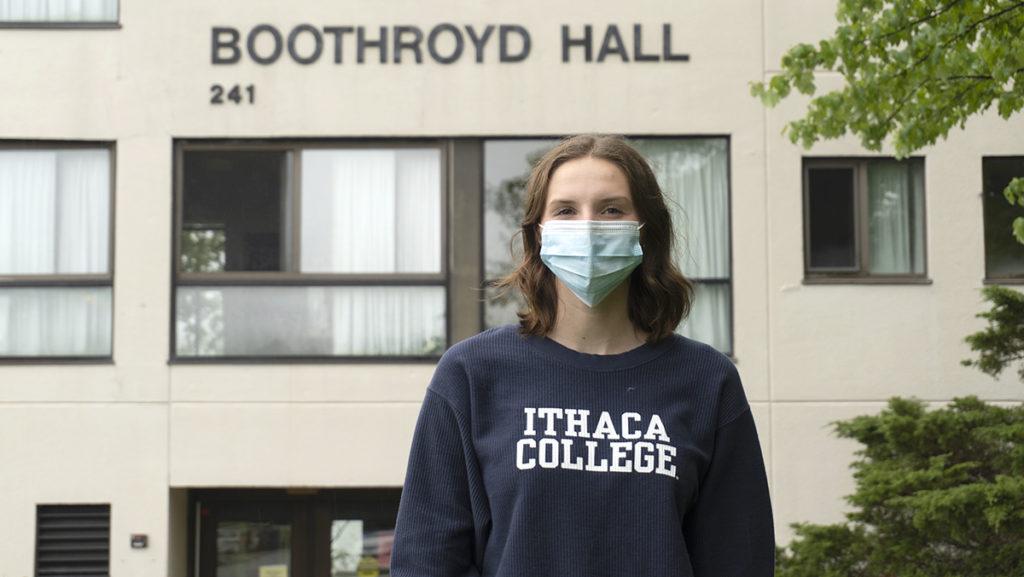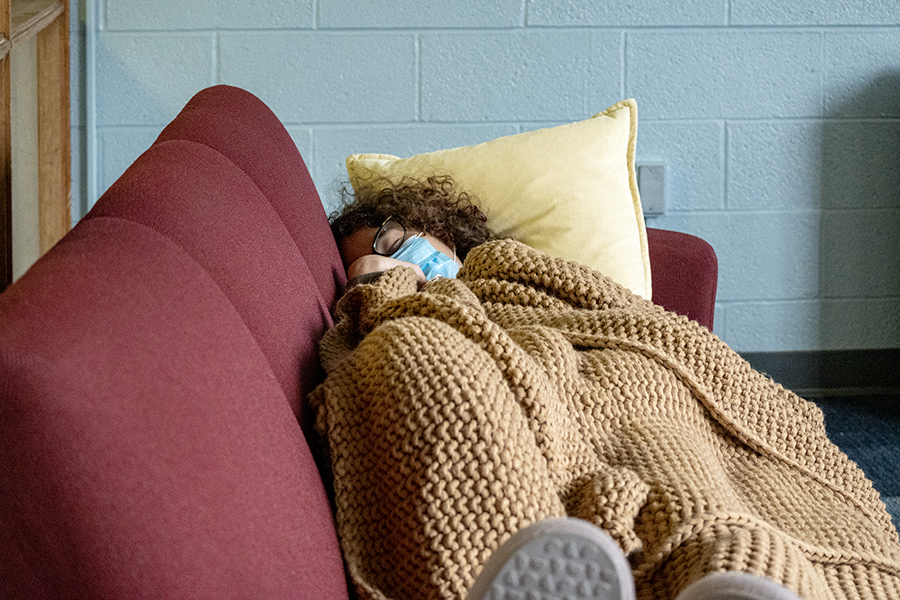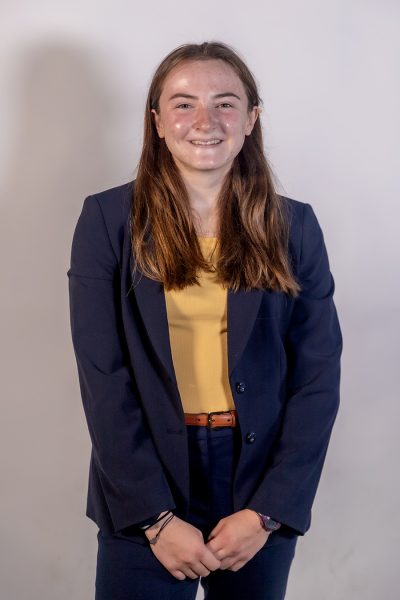As COVID-19 cases spiked the week of Aug. 22 at Ithaca College, some students checked in to Boothroyd Hall to quarantine and discovered that the isolation center had no available rooms.
At the peak of the spike Aug. 25, the college’s online COVID-19 Tracking Dashboard reported 55 student cases, which exceeded Boothroyd Hall’s 40 isolation rooms. Samm Swarts, assistant director of Emergency Preparedness and Response, said the college created additional isolation spaces around campus in campus apartments, Garden 29 and doubled up some students in rooms in Boothroyd to accommodate the increase in cases.
Boothroyd has replaced Emerson Hall as the college’s primary testing and isolation center. All vaccinated students who live on campus and test positive for COVID-19 must isolate at Boothroyd for at least five days after the start of their symptoms and until they are fever-free for 24 hours. According to a July 27 email that outlined COVID procedures for the fall semester, unvaccinated residential students who are exposed to the virus must quarantine in Boothroyd. Vaccinated students who are exposed to the virus can get tested for COVID-19 for free at Boothroyd.
First-year student Marin Lent said she tested positive in her dorm with a self-test kit Aug. 24. She said that after she tested positive, she was unsure about the procedures for isolation, including where to go and what she was allowed to do once she checked into Boothroyd.
“There’s someone that you can email or call to ask questions, but when you get [to Boothroyd], you don’t know what you can and can’t do,” Lent said. “The whole thing is just very confusing.”
Lent said she was also unsure whether she needed to wear a mask as she left isolation Aug. 27.
Lent’s roommate, first-year student Hannah Wagner, tested positive in her dorm one day after Lent on Aug. 25. After she tested positive again at Boothroyd Hall the next morning, she was instructed to return to her dorm, pack a bag and wait to be notified when an isolation room became available. After almost four hours, she called to ask about her room and learned that it had been ready for a few hours.
“It definitely brought on a very anxious feeling just sitting around and waiting,” Wagner said. “[I] didn’t really know how to go about if I needed to use the bathroom or if I needed to get something. For an hour or so would be no big deal, but I was stuck in my room for about three to four hours. It was definitely not a pleasant experience.”
Swarts said students may have to briefly self-isolate in their dorms and wait for a room in Boothroyd to be cleaned, but they will be notified as soon as it is ready.
Wagner said when she left isolation at Boothroyd on Aug. 31, she was verbally instructed to wear a mask indoors around campus. She said she thought that the college heard students’ concerns about communication and tried to provide clearer messages.
Swarts said that isolating students receive all necessary information via email.
“Instructions for isolation and post isolation are clearly communicated with all students via email,” Swarts said via email. “It is very important that students read the emails that we send them in their entirety to be sure that they are not missing vital components during and after their isolation process.”
He said the college is employing all available resources to support students in isolation. The college offers Zoom information sessions to help students keep up with classwork, information about counseling services and one hour of outdoor time each day. Swarts said the college as a whole does not offer Zoom classes for isolating students.
“It is up to students to self manage that process for themselves,” Swarts said. “We always encourage them to reach out to their professors to let them know. … I think what’s really important to remember is that we are not a dual instruction or a hybrid campus.”
Lent said she felt her professors were understanding when she communicated that she had COVID and was isolating. She said Mary Lourdes Silva, associate professor of writing, moved her writing seminar class to Zoom during the COVID spike Aug. 26.
Silva said via email that she designed her courses this summer with a Hybrid Flexible Course Design, a structure that uses Canvas to make class resources and assignments accessible to students at any time even if they are not in class, because she anticipated ongoing COVID spikes. The hybrid learning model made it easier for her to move the 40-person class session, which combined two of her writing courses, to Zoom as cases spiked.
“I didn’t want to put myself or my students at risk,” Silva said. “As we think about designing and redesigning our curriculum and learning spaces, we need to consider all tools, mediums, and modalities that facilitate learning. A standardized curriculum with “butts in the seat” and necks straining toward the whiteboard is not always going to cut it. I am trying to learn from my students and design my curriculum around their needs.”
Priya Sirohi, assistant professor of writing, said she works with her isolating students to help them catch up on what they miss in class while they are in isolation. She said she has 30 minute Zoom meetings with isolating students to review lessons and assignments.
“The first thing I tell [students] is your health matters first, so take the time you need to take and I will catch them up after the fact,” Sirohi said. “I don’t force the assignment on them early on. They’re really worried about the regular deadlines and so I try to give them a lot of space.”
Sirohi said she encourages students to reach out to their classmates as well to catch up on anything covered during in-class discussions.
Swarts said that the college continues to refine its plans for isolation. He said that the college is evaluating additional isolation spaces and making plans to accommodate any future increases in cases.
“I’m hopeful that for the next few weeks at least we’re going to be in an OK position, and then additional details about any changes in quarantine, isolation or changes in general COVID protocols will be shared with the campus community once they’re finalized,” Swarts said in an interview.












